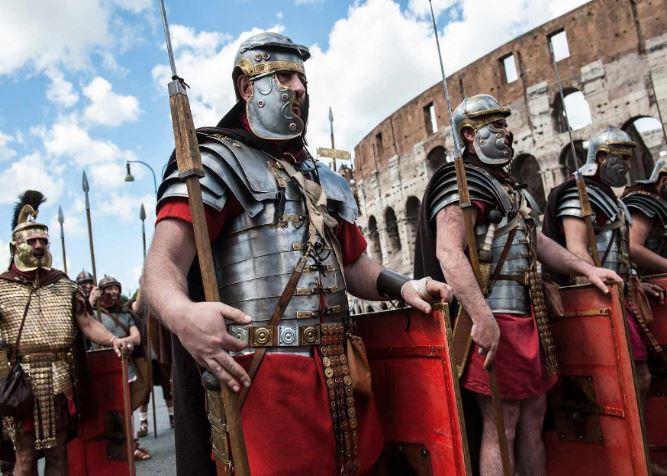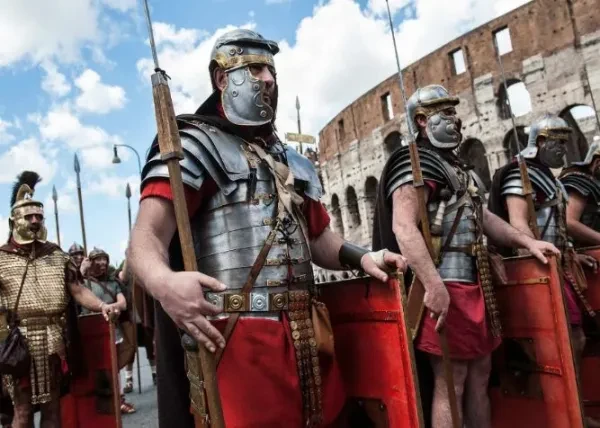
In ancient times, the Roman people felt they had to protect their empire through battles and wars. These battles often lead to change in leadership, and allowed for the development of Roman culture in history. The Romans had a very expansive mind set over the centuries that sparked almost all of the battles that we are about to look at. Roman army ready to march into battle.
Here are the 10 most famous Roman battles and wars throughout history:
10 – The Battle of Silva Arsia
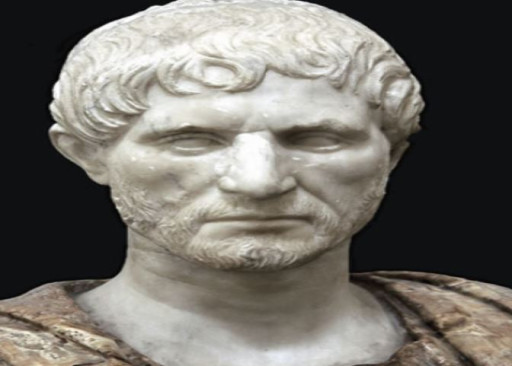
Consul Brutus led the Roman Republican troops to victory at the Battle of Silva Arsia. Sadly his life was claimed in the same battle.
This battle forms part of the legendary early history of Rome. In 509 BC the Republican forces of ancient Rome and the Etruscan forces of Tarquinii and Veii engaged in battle. The battle took place near Silva Arsia in Roman territory. This battle was one of the numerous attempts by the deposed Roman king Lucius Tarquinius Superbus to regain the Roman throne. The outcome of this battle would have a big impact on the maintenance of the Republican government in Rome.
Important notes about this battle:
- The battle of Silva Arsia was part of the Roman – Etruscan wars.
- The battle took place near the Arsian forest in Roman territory.
- The battle was between the Republican forces of Rome and the Etruscan forces of Tarquinii and Veii.
- The battle leads to the death of one of the Roman consuls, Lucius Junius Brutus.
- Victory went to Rome when the Republican forces defeated the monarchist.
Did you know that Lucius Junius Brutus made an oath to kill the former king Lucius Tarquinius Superbus? One of the sons of the former king, raped Lucretia (wife of the consul) and drove her to suicide. During the battle both men charged one against the other with spears, resulting in the death of them both.
9 – The Battle of Cannae
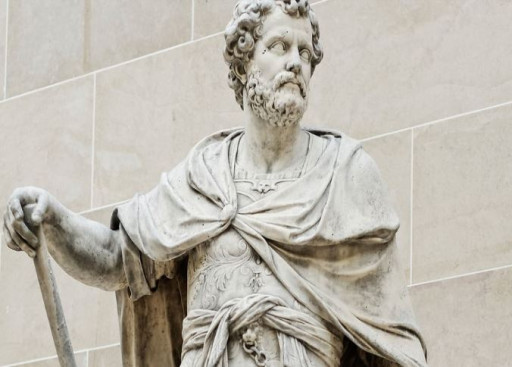
The Romans built statues of Hannibal, to later celebrate their victory over a worthy adversary in 202 BC.
The battle of Cannae was the second battle of the Punic War on August 2 216 BC. The battle was part of the ongoing territorial dispute between the Roman Republic and the North African city-state of Carthage. The battle took place near the town of Cannae. Troops were led by the Carthaginian general Hannibal and the co-consuls, Gaius Terentius Varro and Lucius Aemilius Paullus from Rome. After the military genius Hannibal caused the Romans up to 50 000 casualties during his last impromptu battle, the Romans decided on a new course of action. They would use a delaying strategy to cut off supply lines to Hannibal and so avoid these impromptu battles.
Their plan had the following consequences:
- Hannibal seized a vital supply depot near Cannae in Italy.
- When the Roman heard this they moved their troops into position. Now both parties were deployed along the river Aufidus.
- According to historians Hannibal had about 50 000 troops and the Romans about 80 000.
- Hannibal anticipated the Romans troop formations and positioned his troops to form a crescent as part of a battle trap.
- This trap lead to Rome’s doom and more than 70 000 of their troops were captured or killed.
Although Hannibal did not win the war, his victory at the battle of Cannae earned him a place in the pantheon of great military commanders.
8 – The Battle of Teutoburg Forest
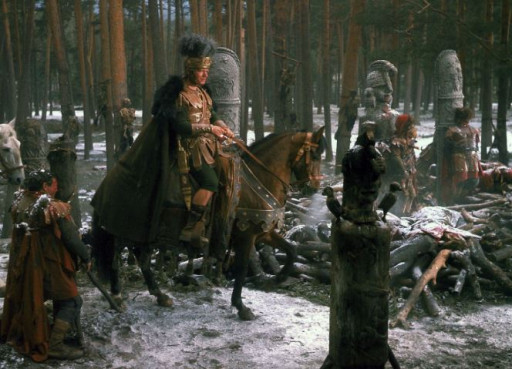
The battle of Teutoburg forest took place in 9AD between the Roman Empire and the Germanic Tribes. The battle was sparked when Emperor Augustus Caesar decided to invade a region of Germania to bring it under Rome’s border. At the time of the battle the Roman troops were led by acting governor Publius Quintilius Varus. Under the orders of Augustus he was to Romanize the Germanian provinces.
This angered the Germanian tribes and they planned an ambush:
- Arminius of the Cherusci had been an ally of the Romans. He was a noble hostage that grew up in Rome and received Roman citizenship.
- He was a frequent messenger between the Romans and the Germanians. This is how he was able to gather the support of the Germanian tribes.
- Arminius gave Varus false information about a supposed rebellion in the North West parts of Germania. Varus believed this and started to move all his troops northwest.
- On the second day of their march the Romans had to travel through a pass that was forested and muddy. The Germanians had the advantage of higher ground and ambushed and attacked the Romans.
- On the next day the remaining troops were ambushed again when they moved through another wooded area.
This was one of the battles where Rome lost three of its most powerful troop legions at the hands of the Germanians. Rome later chose not to occupy Germanian land, but instead stationed eight legions to safeguard the eastern provinces from Germanian invasion.
7 – The Punic Wars
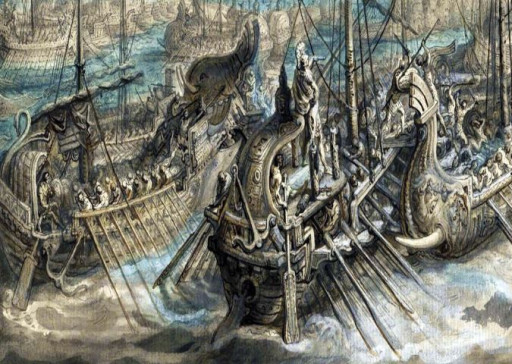
The Roman forces did not have a navy army during the first Punic War.
From 264 BC until 146 BC a series of battles were fought between the Roman Republic and the Carthaginian Empire. These battles were known as the Punic wars.
- The 1st Punic war broke out in 264 BC in Sicily. This was due to Rome’s expansion attitude and Carthage’s proprietary attitude. Carthage seemed to be the more dominant victor in this battle as Rome did not have any navy troops.
- The 1st Punic war lasted 23 years.
- The 2nd Punic war began in 218 BC. This is also the war in which the battle of Cannae was witnessed. A big player in this war against Rome was Hannibal. He was eventually defeated in 202 BC. This led to a treaty where Carthage lost their overseas territories.
- After the 2nd Punic war Carthage ceased to be a military threat.
- In 149 BC Rome declared war on Carthage again. Starting the 3rd Punic war. In 146 BC Rome stormed the city of Carthage and laid it to waste. All the Carthaginian territories were taken over by Rome.
Did you know: The ruins of the city Carthage lie 16 km east of the modern Tunis on the North African coast? A century after the war Julius Caesar rebuilt Carthage as a Roman city, and it became one of the main cities of Roman Africa.
6 – Marcomannic Wars
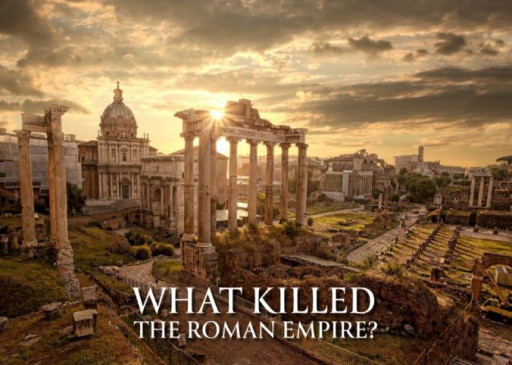
The Marcomannic wars were a series of battles that lasted from 166 AD. These battles were fought between the Roman Empire and the Germanic Marcomanni and Quadi.
These wars were fought in Germania along the Danube River.
- The war against the Marcomanni was already planned by Emperor Augustus, but the defeat of the Romans at Teutoburg forest forced him to abandon his expansion plans.
- The invasion of the Germans fell at a very bad time for the Roman Empire. Their troops had just returned from the war with the Parthian State. They brought the plague along with them and nearly 8 million Romans were killed.
- Rome was able to temporarily postpone the first invasion of the Germanic troops. They did this by playing the Germanic tribes up against each other. They wanted them to fight against each other instead of against Rome.
- The lack of recruiting troops due to the plague resulted in the Great Roman Draft. Gladiators, slaves, and professional criminals were put into the ranks of the legions (troops).
- This strategy seemed to work and the Romans were able to force the Germanic troops back across the Danube border.
Although Rome was victorious, it would not be possible for them to maintain the property across the Danube in the long run.
5 – Battle of Vercellae
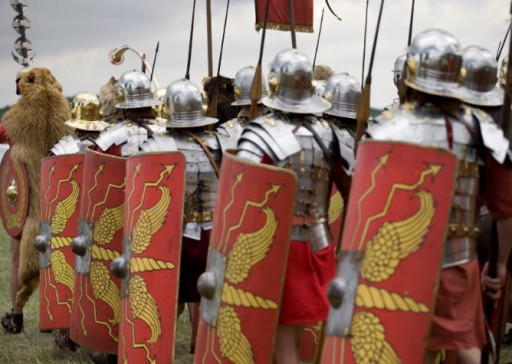
The Roman Republic marching on the Cimbrian troops.
In 101 BC the battle of Vercellae was fought. This battle was part of the Cimbrian war.
The short version of the battle is that:
- The Roman Republic fought against the Germanic – Cimbri.
- The Roman troops were led by Gaius Marius, Quintus Lutatius Catulus, and Lucius Cornelius Sulla.
- The Cimbri troops were led by Boiorix, Lugius, Claudicus, and Caesorix.
- During the battle the Romans held their position and used the reflection of the sun on their helmets to their advantage. This meant the Cimbri had to come to them, and expand more of their energy.
- The Romans had a complete victory and put an end to the Germanic threat on Rome’s Northern borders.
The battle left the Cimbri wiped out. The women and children were captured as slaves, and some of the children may have been among the rebelling gladiators in later years.
4 – The Pyrrhic War
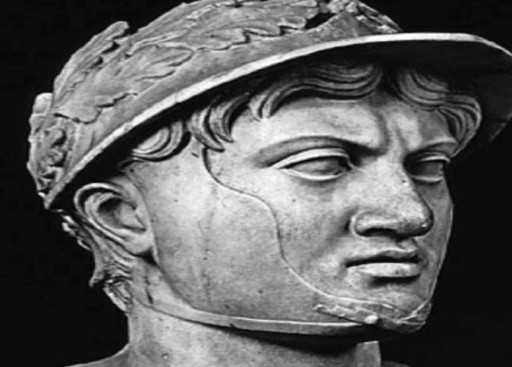
Pyrrhus the king of Epirus.
This was the defining war that showed the other countries that the Roman Empire could win a war even if they suffered many losses during the battles.
To summarize this war period:
- The Pyrrhic war started in 280 BC and ended in 275 BC.
- The war was fought between the Roman Republic and Pyrrhus, who was the king of Epirus.
- This war was sparked by a minor conflict between the city Tarentum and the Roman Republic. There was a violation of a naval agreement by a Roman consul.
- Tarentum and Epirus worked together to defeat the Roman Republic, but were unsuccessful.
- Both sides had many casualties, but the Roman Republic was victorious.
3 – The Roman-Latin War
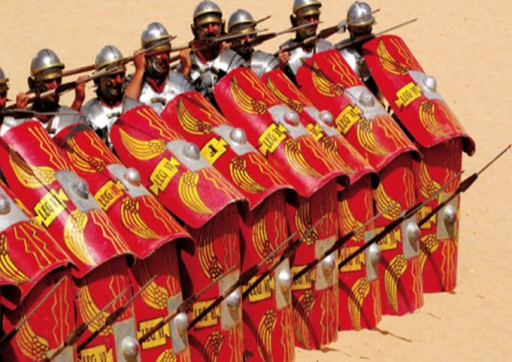
The 7th Century BC was mostly overshadowed by the Roman-Latin war.
The war started when the Latins explored Roman lands, expecting support from the Roman king.
- The Roman king – Ancus Marcius – declared war on the Latins.
- After a series of wars in 588 BC, a peace treaty was signed and some Latin cities were taken over by Romans.
- War broke out again in 508 BC with the same results. Once again a peace treaty was signed.
- In 389 BC Latin broke this treaty. The city of Praeneste marched on the city of Rome.
- Rome was once again victorious, and the Latins later became Roman allies.
2 – The Macedonian War
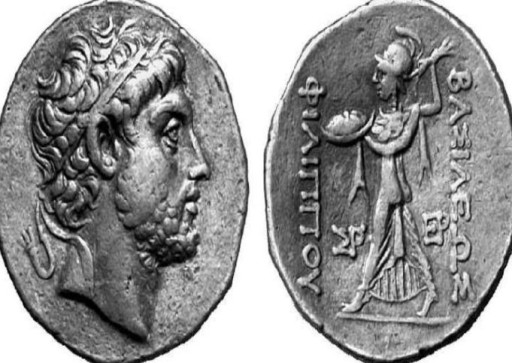
Philip V from Macedonia as the king on coins.
The Macedonian war was a series of four wars. They happened from 214 BC until 148 BC. This war was between the Roman Republic and several Greek kingdoms. What is interesting is that there were also Greek allies who fought on the side of the Roman Republic.
This is a timeline of the four Macedonian wars:
- 1st war – 214 BC against Philip V of Macedon
- 2nd war – 200 BC and ended with the death of Philip in 196 BC
- 3rd war – 171 BC to 168 BC against Philip’s son Perseus. Upon the defeat of Perseus, Macedon was divided into four regions and ruled by Rome.
- 4th war – 150 BC when Andriscus pretended to be the son of Perseus and started an uprising against Rome.
Once again Rome proved their strength and defeated the Greeks in all four wars.
1 – The Great Roman Civil War
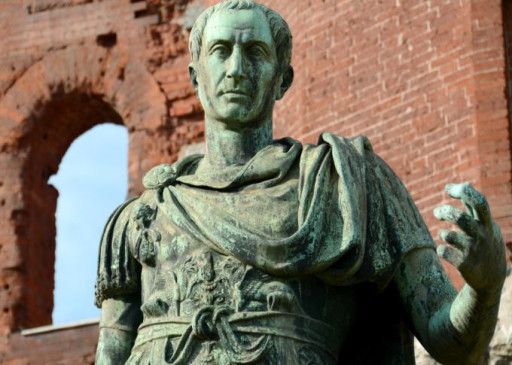
A statue showing Julius Caesar.
Various leaders battled for political power in 49 BC. This meant that a war would be imminent, as they battled for leadership.
The historic version of this war goes as follow:
- Between 49 BC and 45 BC Julius Caesar warred with members from the Roman Senate.
- Caesar had introduced many reforms to the people of Rome, and he was highly valued in their eyes.
- Caesar won this civil war and was appointed ruler along with Mark Anthony.
- As a result of the war the Roman Empire was named.
- Despite his popularity, Caesar was later assassinated and Mark Anthony committed suicide.
All of these battles and wars give us an at glance overview of how the Roman Empire was built, and shaped. For a long time Rome had a big influence on how things happened across the world. One can’t help to wonder how different things would be if they had continued their reign.
You may also be interested in:
- [Top 15] gods from Roman mythology
- [Top 15] most famous Roman gladiators
- [Top 15] powerful characters in Roman mythology

